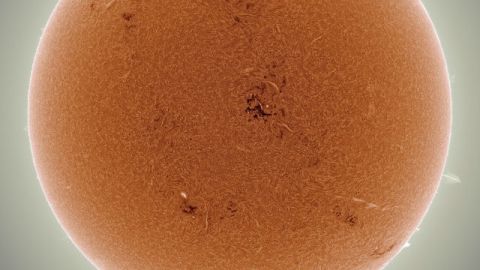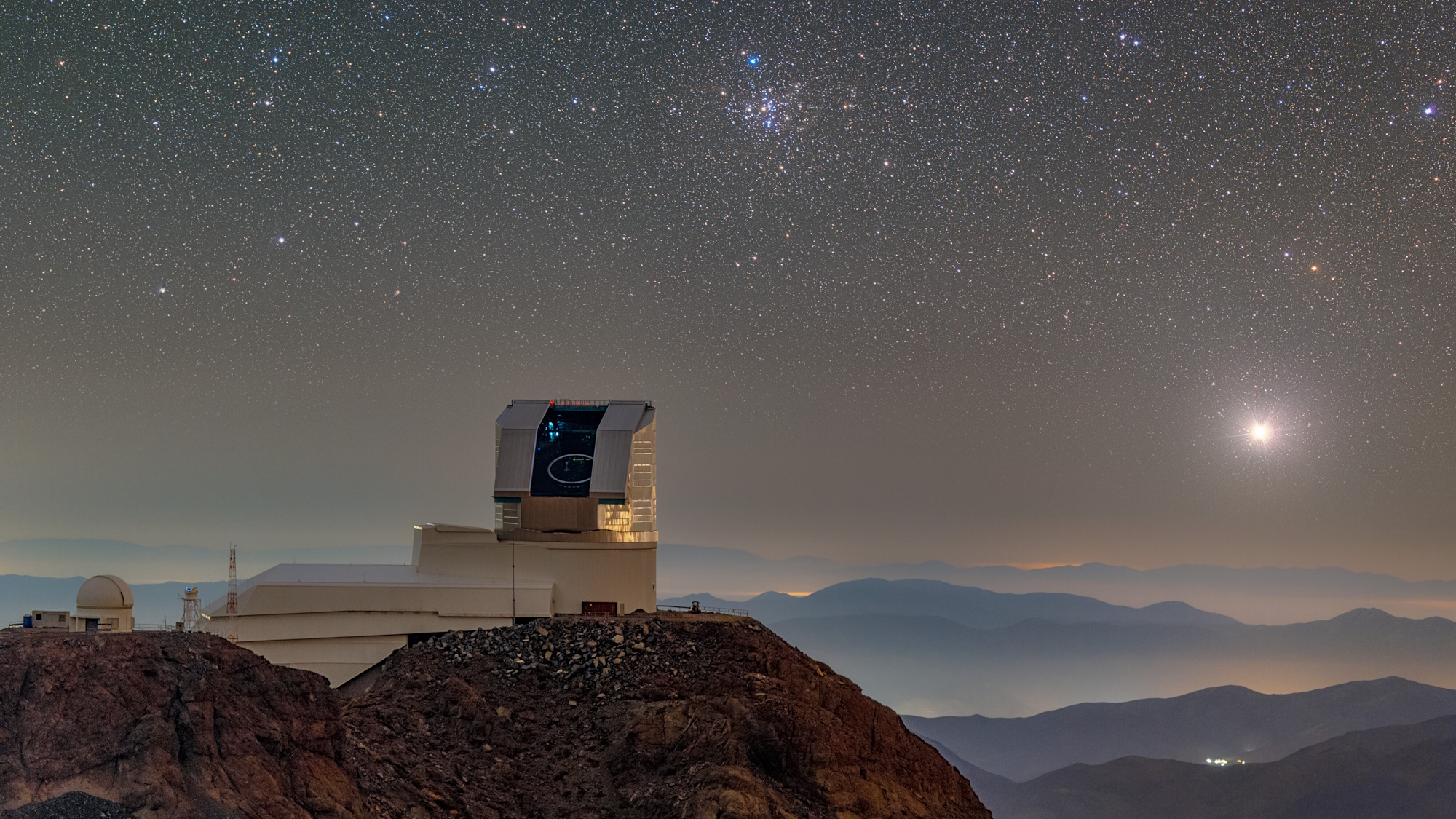Orange Sun Sparkling

The Sun has been quite dramatic lately. This image was captured only two weeks ago by NASA. It shows the Sun’s surface rippling with tumultuous activity, including the sunspots seen near the top and center of the image.
NASA explains what’s causing the excitement for the Sun, and therefore us and our satellites:
Only four years ago the Sun was emerging from an unusually quietSolar Minimum that had lasted for years. The above image was recorded in a single color of light called Hydrogen Alpha, inverted, and false colored. Spicules cover much of the Sun’s face like a carpet. The gradual brightening towards the Sun’s edges is caused by increased absorption of relatively cool solar gas and called limb darkening. Just over the Sun’s edges, several filamentary prominences protrude, while prominences on the Sun’s face are seen as light streaks. Possibly the most visually interesting of all are the magnetically tangled active regions containing relatively cool sunspots, seen as white dots. Currently at Solar Maximum — the most active phase in its 11-year magnetic cycle, the Sun’s twisted magnetic field is creating numerous solar “sparks” which include eruptive solar prominences, coronal mass ejections, and flares which emit clouds of particles that may impact the Earth and cause auroras. One flare two years ago released such a torrent of charged particles into the Solar System that it might have disrupted satellites and compromised power grids had it struck planet Earth.
Image credit: NASA




